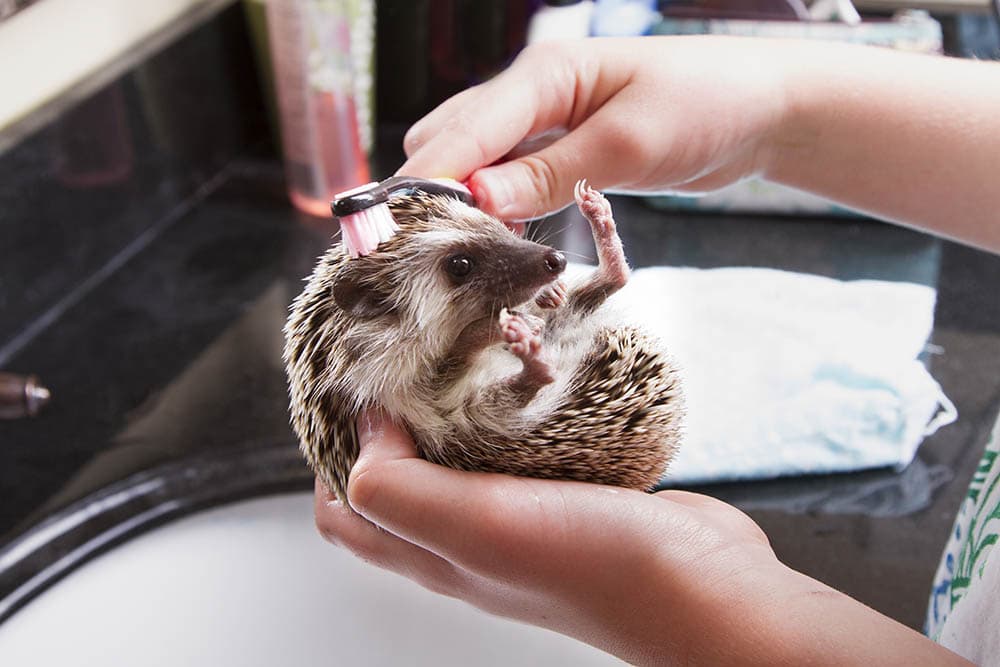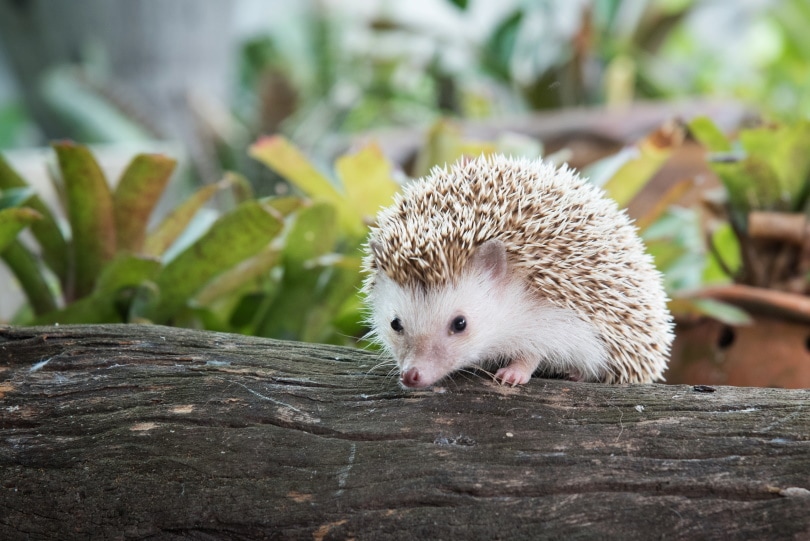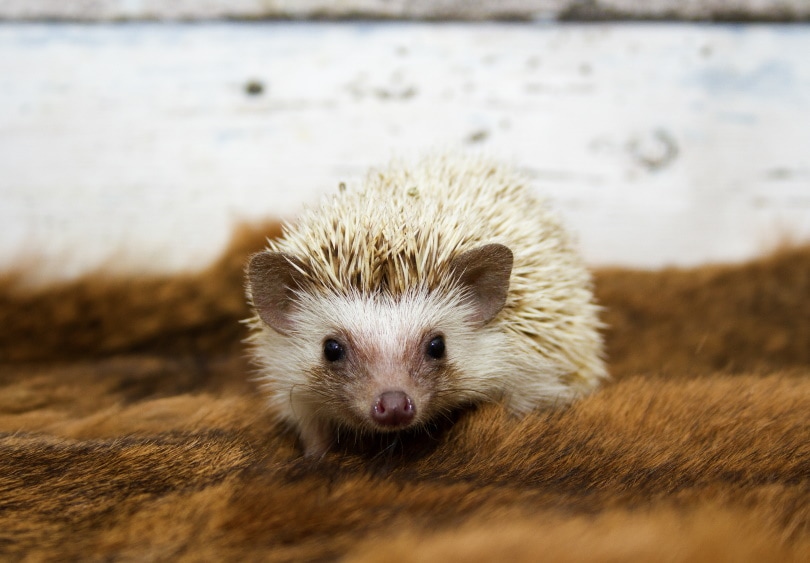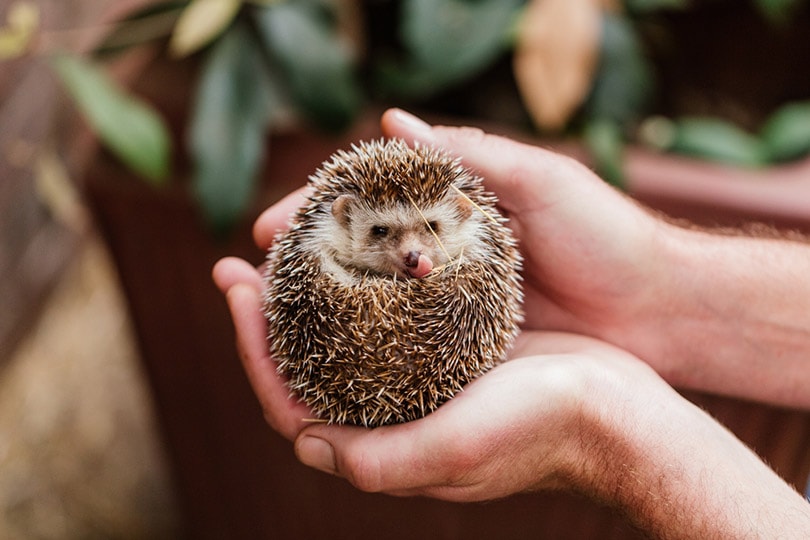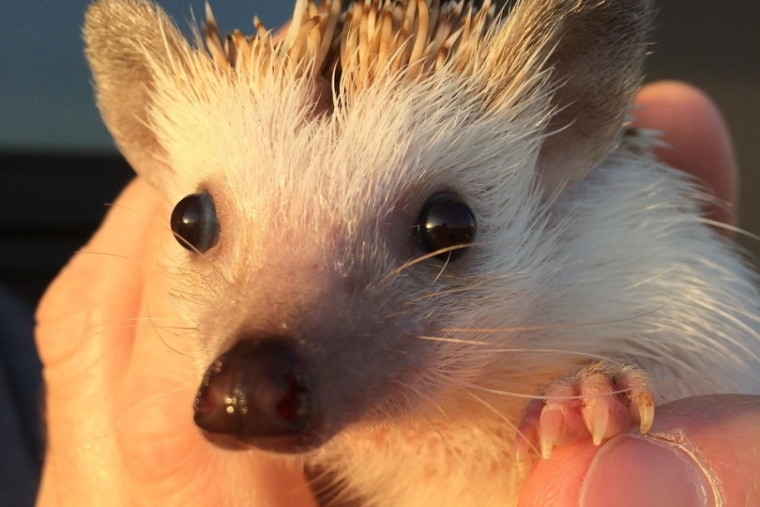
It’s hard not to fall in love with hedgehogs. They’re adorable, and it’s absolutely charming when they roll up into a ball. The most commonly kept domesticated hedgehog is the African Pygmy Hedgehog. However, Egyptian Long-Eared Hedgehogs have been successfully domesticated.
How can a prospective pet parent choose the hedgehog that’s right for them? By getting all the facts, of course! Here’s the scoop on the Egyptian Long-Eared Hedgehog.
Quick Facts about Egyptian Long-Eared Hedgehogs
| Species: | Hemiechinus auritus auritus |
| Family: | Erinaceidae |
| Care Level: | Low-to-Medium |
| Temperament: | Intelligent, Curious |
| Color Form: | Brown |
| Lifespan: | 7 years |
| Tank Size: | 24 inches x 24 inches |
| Tank Set-Up: | Soft bedding, exercise wheel, hidey house |
| Diet: | Carnivorous; primarily insects in the wild |
| Compatibility: | Solitary but can be socialized with other animals |
Egyptian Long-Eared Hedgehog Overview
Egyptian Long-Eared Hedgehogs are one of the three successfully domesticated hedgehog breeds. They’re popular because they’re relatively cheap to maintain and low maintenance by comparison to a lot of other pets; you don’t need to take them for walks, and they don’t have as strong of a social need. They’re happy to be left to their own devices for the most part.
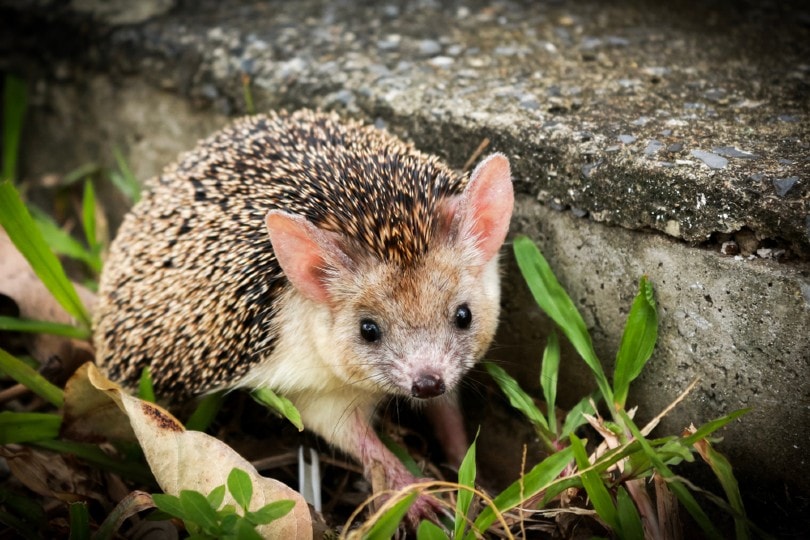
How Much Do Egyptian Long-Eared Hedgehogs Cost?
Egyptian Long-Eared Hedgehogs cost between $800 and $1500 on average. Expect to pay a relatively high premium to get a hedgehog from a reputable breeder. Their permanently smiley faces make them highly demanded pets. So, getting one from a good breeder won’t be a cheap affair.
Typical Hedgehog Behavior & Temperament
Egyptian Long-Eared Hedgehogs are curious and intelligent but generally pretty solitary. They’re great pets for someone who only wants one pet because they don’t have the same social needs as many other pets. They may be nervous at first as they’re typically prey animals, but they learn quickly and can be easily tamed and brought to the family as friendly pets.
This species of the hedgehog is much less likely to curl up into a ball when threatened, preferring to run away or leap at opposers with their spines.

Hedgehog Appearance & Varieties
The Egyptian Long-Eared Hedgehog is characterized by its long ears 1-1.75 inches longer than the nearest dorsal spine. Their spines are white at the tip with darker banding closer to the skin, and they don’t have a gap in the dorsal spines near the neck like other species of hedgehogs.
 How to Take Care of Egyptian Long-Eared Hedgehog
How to Take Care of Egyptian Long-Eared Hedgehog
Egyptian Long-Eared Hedgehogs are relatively easy to take care of. They need to be fed, watered, and their cage needs to be kept clean. They’ll also need plenty of entertaining toys because they’re brilliant and may become bored if not stimulated. However, they don’t need much intervention to thrive when provided for adequately. They’re solitary animals.
Habitat, Tank Conditions & Setup
Egyptian Long-Eared Hedgehogs need a cage at least 24 inches by 24 inches, preferably bigger. They don’t need a lot of vertical space; instead, they need lateral space, though some low-sitting platforms can help their area feel less stale.
Providing an exercise wheel is one of the best ways to give your hedgehog mental stimulation. However, some hedgehog parents complain that they can never escape the noise their hedgehog makes when running on the wheel.
If your hedgehog has enough space, you can provide them with a maze or a puzzle that they can learn to keep them busy.
You’ll want to line the bottom of their enclosure with something. Soft paper bedding or simple layered paper towels are an excellent lining for your hedgehog’s enclosure. The bottom of their cage should be solid, not a grate.
While it might be tempting to get a grated bottom to make the cage easier to clean, your hedgehog’s feet can get stuck in the grate. In severe cases, the hedgehog’s leg can break, which usually results in it being put down. Setting a broken limb for a small animal isn’t typically feasible.

Do Egyptian Long-Eared Hedgehogs Get Along with Other Pets?
Egyptian Long-Eared Hedgehogs can be friendly and productive members of the family. However, as prey animals, they may be wary of cats and dogs, which would traditionally be seen as predators to them. With enough training and socialization, your hedgehog should be able to get along with a cat or a dog, but you’ll want to be sure you supervise any playtime between them to avoid any injuries.
What to Feed Your Egyptian Long-Eared Hedgehog
A commercial hedgehog diet will provide the most comprehensive nutrition to your Egyptian Long-Eared Hedgehog. While you can supplement your hedgehog’s diet with veggies and a little bit of canned cat food, commercial hedgehog diets such as Mazuri’s Hedgehog Diet provide all the nutrients that your hedgie needs to thrive.
Egyptian Long-Eared Hedgehogs are carnivorous. In the wild, Egyptian Long-Eared Hedgehogs eat mostly insects; about 70% of their diet consists of insects (which would actually make them obligate carnivores, just like cats!), along with some worms, slugs, and snails.
It’s unclear where the myth that these animals only eat slugs comes from, but, their diet is about 30% beetles, 25% caterpillars, 11% earthworms, 10% bird eggs, 5% meat from mammals, 5% slugs, and snails, 3% earwigs, 3% millipedes, 2% bees, 1% meat from birds, and 5% meat from undefined sources. These hedgehogs have even been observed feasting upon the carcasses of snakes when available.

Keeping Your Egyptian Long-Eared Hedgehog Healthy
It shouldn’t be hard to keep your Egyptian Long-Eared Hedgehog healthy. As long as you keep their cage clean and have enough food and water, your hedgehog should be in tip-top condition. The most crucial factor is keeping their cage clean. Hedgehogs will suffer from a decline in health if their cage isn’t clean.
To mitigate this, you can litter train your hedgehog. Most pet hedgehog parents who try it expressed that the hedgies took to the process quickly!
Are Egyptian Long-Eared Hedgehogs Suitable for You?
If you can keep up with the Egyptian Long-Eared Hedgehog’s cage cleaning, they’re probably a suitable pet for you. Past this, they don’t have many intensive care needs and will mostly keep to themselves, even when socialized correctly, preferring to entertain themselves.
Final Thoughts
Hedgehogs are exploding with popularity, and it’s easy to see why once you’ve taken a gander at their perpetually smiley faces. Egyptian Long-Eared Hedgehogs are one of the hedgehogs commonly found in captivity; so, if you want to bring one into your life, you shouldn’t have trouble finding one! You’ll want to make sure you have the time and energy to keep up with its cage cleaning, but these little critters don’t need much more care if you can do that!
See also:
- Desert Hedgehog: Facts, Varieties, Lifespan, Pictures & More
- Southern African Hedgehog: Info, Care Guide & Traits
Featured Image Credit: glennsontag, Pixabay

